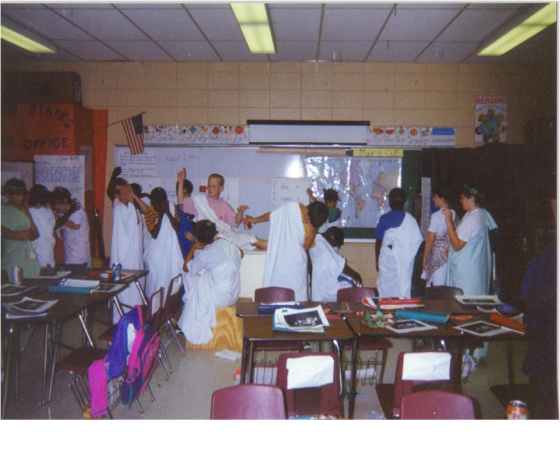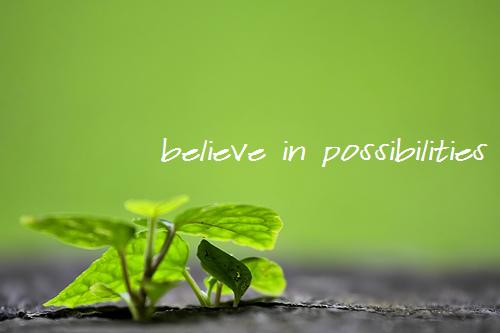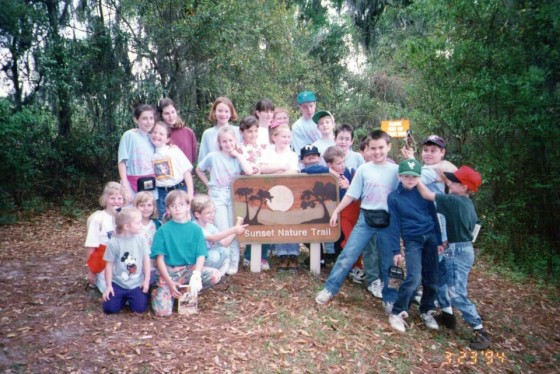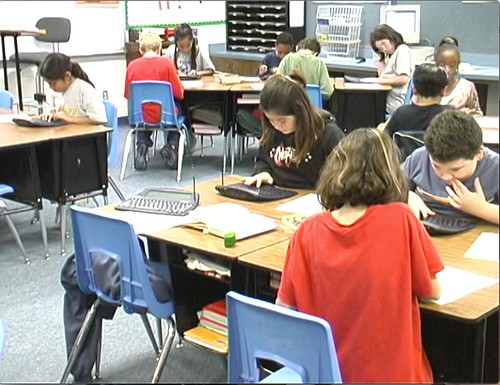Some public schools (by design) foster passive learners, discourage productivity, and fail to teach self-discipline. The culture of “school” works against what research shows to be in the best interest of next generation learners.
Even if the teacher is talented, the environment itself co-conspires against deep learning (for both the teacher and her learners) and application of what is learned in an authentic context. When we combine short instructional periods, classroom spaces that do not support dialogue or collaboration, overcrowded classrooms, inequalities between districts, high-stakes testing pressure and the disconnect many students feel today between what the real world offers and typical classroom culture — no wonder we are ALL frustrated with the system.
It has to change.
It is no longer acceptable to be on the fence about the digital transformation in education. The need for change is not just being acclaimed by thought leaders on the stage at your favorite conference or edgy authors with provocative titles, it has in fact become legitimized by top departments of education around the world, our most respected professional associations and organizations and by policy makers globally. Everyone is chanting technology, technology, technology.
Why?
I used to spend a great deal of my time helping educators understand why we had to shift. its the year 2020 and we know the why. You can ask almost anyone and they can tell you why. We see it on TV, in sitcoms, the news — everyday I hear someone in education using a sound bite that originated with those of us who were leading the first wave of adoption. It warms me inside. It is clear — we get it. Or do we?
How?
We are becoming smarter and smarter about the how. Some have even begun to move into the standardization and credentialing of what how looks like in teaching and learning practices. There are plenty of books, countless workshops and conferences and hashtag chats galore.
But there isn’t enough sharing by those who are embedded in the work. There isn’t enough shared deep reflection, video, or examples of what the how looks like in action. But we can fix that, right?
When?
So where is the rub? Why is this still so hard? Why do I feel like my epitaph will say, “Sheryl dragged educators into the 21st Century kicking and screaming as they went.”
Some say when money becomes available for devices.
Some say when teachers are given the support and training they need.
Some say time is the issue and when we change the schedule to allow more time for using devices in pedagogically sound ways then we will have arrived.
The when is always just around the corner. As I interview Future Ready superintendents across the nation and across the globe, I hear aspects of when in action within pockets of innovation. But I also hear the need for business as usual digital transformation system wide.
My Take
I have thought about this. A lot. And I think it boils down to what we believe about teaching, learning and children. I think there is a disconnect.
We haven’t connected the dots for leaders who crave alignment and that creates anxiety in our data driven decision making world.
We are not even using a common language when we talk about the constructs of future ready or next generation learning.
For example, when I say active learning (the way I started this post) you might visualize kids active on iPads creating and designing. You may see them using a variety of collaborative tools to connect and create artifacts that show mastery of objectives. Kids with microphones, laptops, earbuds, and screen after screen available with endless information displayed in entertaining ways. A definition of learning where devices are seen, discussed and celebrated.
Whereas what comes to mind for me is kids directing their own learning.
I see a child outside doing some experiment or observation in nature and applying it to some area of content they are exploring back in the bricks and mortar setting.
I see authentic, active, learning where technology serves as the medium on which to capture the color, sound, beauty and a-ha moments the students are experiencing.
I see kids connecting and building relationships with people who serve as mentors, provocateurs, and guides.
The technology helps them with connecting, creating and sharing data and becomes an electronic pencil that allows them to share and collect ideas with others around the world. But the devices are invisible in my definition of active learning. They are there much like our heating and cooling systems are there — seamless, invisible, needed, but certainly not the focus. Much like a dinner plate is needed to celebrate the breaking of bread together — but it is not the focus.
What Do We Need?
We need to share a common, collaborative vision of what it is we want in our schools and classrooms.
We need to speak the same language, a language we create together as we build collective intelligence.
Which means we need to make time to talk to each other, to do action research together, to share what we are learning with learner artifacts and deep reflection about what is working and what isn’t working.
We need to fail together and then overcome together.
We need to have conversations and form schema around learning in a digital age both within our school learning community and outside in networks and communities worldwide.
We need to build leadership density in our teachers and our students.
We need to own what we believe and then incorporate the transformation we seek into every area of school culture.
We need to be chanting: empowerment, collaboration, equity, agency, self actualization, and transcendence for kids and for us all within a system that serves as the birth place for every other profession. We need to be chanting these things instead of technology, technology, technology.
A Vision of Possibilities
 What I want for kids in schools is not more devices and screen time or not even just digital transformation.
What I want for kids in schools is not more devices and screen time or not even just digital transformation.
What I want is for them to have access to a rich buffet of beautiful objects of learning from which to choose.
I want them to have access to passionate teachers who want to be partners in the learning process with them. Teachers who are supported and nurtured in their own personalized learning adventures.
I want kids to have exciting learning experiences that open a world of possibility around their interests and in a way that helps transform the learning through deep schema building.
I want kids up, moving, active, building things, making things, reading things, talking about things and being continually inspired.
I want schools that will produce citizens who are informed, immersed, and motivated by love.
Dreaming?
Some of you might be thinking sure, right, everyone wants the classroom utopia you describe, but it isn’t possible. Or is it?
My daughter shared this pic (below) and caption on Facebook. I was inspired and moved by the memory of her school experience. Those who know her will back me in saying she has become a very decent human being. While she is finding her way and certainly has youth on her side, she is smart, informed, outspoken, contributing to society, and motivated by love.

“The kids I grew up with – Friendship Bridge Academy. My mom ran a school for home-schooled kids. Their parents taught some stuff at home, and the rest of our education was like captured in this picture. One room schoolhouse-style, passion-driven, curiosity-based learning where we learned science, history, art, music, and movement by being in nature, acting, singing, dissecting roadkill, making art, playing games, and self-study. Here we are at one of our favorite nature walks, Grassy Pond. I’m in the back center behind the sign, with the bangs.” ~ Amber
Possibilities: A call to action
Join me. Let’s dream about the possibilities together.
Let’s create a common language, a collaborative vision around what we want the digital transformation to include beyond machines and infrastructure.
Let’s brainstorm how to overcome the challenges of personalized learning together.
Let’s create professional learning opportunities that allow each of us to own the change we want to see in schools.
And if you are willing — let’s start that fire here in the comments.
Latest posts by Powerful Learning Practice (see all)
- Hurry, you do not want to miss out on this… - November 3, 2020
- Resist the Urge to Quit Prematurely - October 26, 2020
- Let’s Move Past Feeling Disconnected from Your Students. Words Matter - October 24, 2020



Sheryl,
Your blog resonates because you have hit the nail on the head. As Tom D’Accord, Alice Keeler and so many others have reminded us again and again; it is about technology in the service of learning, not the tail wagging the dog. As you aptly state, technology should be transparent: it is a means to an end, not an end in itself. It is the vehicle that empowers the learner on so many levels. Technology should make the impossible, possible and in so doing transform the learning experience. Restructuring education for the 21st Century should not be about transforming education, but rather making learning transformative. This is not an issue of semantics. In pint of fact, it is about focusing education on the learner. In all matters related to education, we should be asking one fundamental question: “How is the learner transformed? How does this (learning) position the student to become a person of character with the skills and the knowledge to make positive and lasting contribution to their communities and to the world.” If we start with that point of reference and norm the classroom experience against that measure, we will be well on our way to preparing our students for lives that matter.
What a beautiful reply. I particularly like “Restructuring education for the 21st Century should not be about transforming education, but rather making learning transformative. ” Let’s tease that out. What does that look like in action?
Great post! Love the comment that in active learning the devices should be invisible. I firmly believe that they are just another tool in the toolbox. Sometimes you need a hammer, sometimes you need a screwdriver. Sometimes you can get the job done with either tool. Same principle applies to the classroom.
Jason,
I do get the tool analogy – it works for me, But technology is also like a canvas– not just the paintbrush but the canvas itself. It holds the beauty of learning through the creation of art like artifacts that can be used to prove mastery of learning.
Hi Sheryl – I really appreciate this article and agree completely. As a college instructor, former home school parent and community engagement specialist I am committed to experiential pedagogy. Currently I’m working on developing an online platform for high school students who are civically engaged: to prepare them for their engagement & leadership, reflect other with peers who are likewise engaged around the world, and learn from each other. I look forward to following your posts and work.
-Carol founder of the fledgling icollabglobal.com
Carol,
A kindred spirit! Can’t wait to check out your work. Please share as your platform unfolds. Would love to hear more and see it in action.
Sheryl
Hope you can hear me clapping! Here’s my initial reaction –
” I see kids making informed choices about the way they learn, what and how they learn and which technologies they use”…….
What that looks like ? I’m off to think and will get back to you!
Can’t wait to hear what you come up with. Thanks for commenting.
Thank you for this compelling call to action! I am the co-creator of a pop-up school where we live and breathe active learning. We build learning environments that support multiple needs and skill levels. We ask “why” before – and after – we plan. We use technology to capture the learning process; to remix for further innovation; and to share discoveries for building knowledge. And we work exclusively wih reusable materials to promote a future-culture of sustainability. We’ve spent the past year experimenting with new ideas, releasing ownership to make space for meaningful change and stepping out of the way to empower students. The results have been powerful and encouraging! I invite you to visit our gallery of images and reflective blog posts to see how we define active learning — and then let us know how we can help create a common language! http://www.thinkined.com
Simone,
I will visit your site and would love to have a conversation at some point. But for the purpose of this post I would love to push back a little. I get it. Platforms that allow for ownership, that are student directed are great. But I am looking for ways that kids can become producers of knowledge without being locked to a screen. I am seeking balance. I want learning to be active in body as much as mind. Does that make sense?
Sheryl, Well said.
I think what you have touched on here is actually a much larger problem: In our profession, we SORT of have a common language , especially when it comes to instructional technology.
The example that comes to mind immediately is the phrase Learning Management System or LMS. Our district is looking at various LMS’s and for the life of me, it appears that every one we look at has a completely different set of features and functionalities. What one group thinks is an LMS another has a completely different idea,
Another example is the SAMR model. Ask ten people what they think Augmentation is in a lesson, and you will get 10 different answers. Same for every other letter on the SAMR scale.
The examples go on and on and on. I cannot imagine other professions with the same problem. Do doctors disagree over what an appendectomy is? Do pilots disagree on what a 29 degrees West runway means? Do musicians disagree on what a quarter note is?
I agree that we need a common lingua franca for ed tech and education in general.
The trick is, how do we go about that? We need agreement by all parties involved.
You make valid points that give depth to the common language issue. You said, “The trick is, how do we go about that? We need agreement by all parties involved.” I think that is the question– how do we go about that. It certainly will not happen top down. Collaborative, distributive leadership that enables empowered teacher leaders and other staff to have deep meaningful conversations building collective intelligence within the learning organization. How do we get there?
Hi Sheryl,
Thank you for this piece & the opportunity to read & submit comments. My idea of active learning is like yours–“active in body as much as mind.” To that I would add balanced, integrated, wholistic–much like the experiences your daughter had with Friendship Bridge Academy. Your last call to action, “Let’s create professional learning opportunities that allow each of us to own the change we want to see in schools,” is something we continue to work on in our region, despite painfully slow bureaucratic educational systems & districts. Keeping the focus on teaching & learning and providing space/opportunities for professional development including deep listening, action research & reflective practice are central to the work. I would be happy to collaborate with you in any way that makes sense going forward. Let’s re-write your epitaph! Best Regards, Ann
” Let’s re-write your epitaph! ” I love that. Yes, let’s do that. I will be in touch.
Great! Looking forward to next steps!
A kindred spirit in the vision of active, engaged learning. Indeed the current systems conspire to constrain learning, with fear from the teachers of “not covering” the content when, in reality, artfully designed learning can do that and more. Enabling teachers to help leverage “What if…” and “Why…” questions with students, and then design engaging learning opportunities and problems to solve that reach beyond the desk, room, school walls, community boundaries, etc. Allowing schools to break the mold of industrial education; allowing teachers to break the mold of teacher-centered instruction; discovering how to balance the accountability that is today’s reality with what students really need and with what motivates them; building the capacity of principals to support teachers to do just that; engaging parents as partners in supporting a model of education that may differ greatly from the one they may or may not have enjoyed…. these are the things I’m thinking about…
Thank you for your article. I too believe that technology should be transparent.We must remember that the technology should enable the learning not be the center of our focus. Students need hands on activities that cause them to interact with others. Technology should enable this focus.
First of all, we have to find out the way to nourish students brains right from the beginning. Obviously, not every child has the luxury to be bright early on. Be it their background, or heritage that is the cause. If we improve their intellects, then they will be able to comprehend why and how they should learn.
A fervent AMEN! Bookmarking, tweeting, and otherwise widely sharing this post. I especially loved the tech/dish analogy–spot on! Thank you!
It makes me reflect on why this is a teacher-by-teacher transformation. When I student-taught, my mentor teacher was an island of inquiry and student empowerment in an extremely traditional school. When I became employed at an inquiry-based school that philosophically embraced such 21st century learning ideals, I expected to find every teacher on the same page–but was in some cases disappointed. For some educators, it was that they had recently graduated from universities that had not yet begun to pass along 21st century learning values to their students; for others, they had had long careers at other traditional schools, and weren’t ready (or perhaps willing) to change. It’s a reminder to me that even a school-wide mission/motto is not enough to bring about the change that is necessary–we are, after all, talking about a very personal and fundamental shift in mindset, and it seems to me that that requires very personal and consistent support. Accessibility to that kind of support is definitely one issue for many, but perhaps the more important problem is getting teachers to seek it!
Great post! I would love to comment on Active learning blogs.Sometimes you need a hammer, sometimes you need a screwdriver. Sometimes you can get the job done with either tool. Same principle applies to the classroom.
I absolutely agree with this blog, I love the idea of getting kids out in the community to build a better future for others, as well as themselves. Through community service and active learning students learn important skills that will propel them through life. I agree that technology can help this process. The internet gives students a platform for networking and collaboration, which could lead to students offering a helping hand. This proves technology can be positive for the classroom, although in other cases technology could pose as a danger for students. I see this in the children in my community, who walk around with their noses pressed to their screens. Today, technology can be used as a tool for some parents who are just seeking a little quiet time. I believe there is little harm in this, but when a child strikes a deal with their parents that they will only go to the top of the Eiffel Tower in Paris for an extra iPad hour, then I think technology can be a problem. This unfortunately was a scenario the kids I babysit for created and their parents were not happy. Teaching kids the right way to use technology is also up to us as educators.
Thank you for the great read. It is really energizing to see students problem solving and having fun learning. Technology is not always the end-all answer but rather just a tool or stepping stone for students. But it really takes a good leader or facilitator to see the big picture and put the pieces together.
Carla,
I so agree! Technology is one of many mediums a student can use to create and co-construct meaning. I was sharing with someone today, the real test is can the learner take the content and generalize it to a different context? Situational knowledge is important but using what you know to advance your learning is key. Thanks for stopping by and commenting.